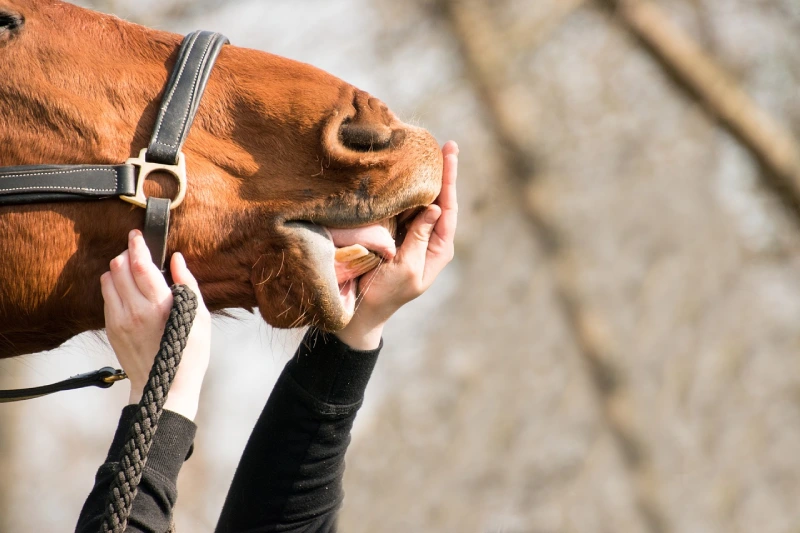For their herbivorous diet, horses have a special set of teeth that are specialized to them.
Teeth of a Horse: Anatomy
Like humans, horses have two sets of teeth throughout their lifetime. The initial set of teeth, known as deciduous teeth, has 24 teeth and is shed as the horse matures. Depending on the horse’s gender and breed, their permanent set includes 36 to 44 teeth. Horses also have a dental pad that helps in grinding and chewing their food.
The crown, neck, and root are the three primary parts of a horse’s tooth. The visible portion of the tooth that is above the gum line is called the crown. The portion of the tooth that is at the gum line is called the neck, and the portion that is below the gum line is called the root. The portion of the tooth that anchors it in place is the root, which is ingrained in the jawbone.
Horse teeth types
Horses have three different types of teeth: incisors, canines, and molars. The front teeth of the horse’s mouth, known as incisors, are used for chewing off and cutting grass. Horses have anywhere between 6 upper and 6 lower incisor teeth. The teeth that are situated behind the incisors are referred to as canines or tushes. Mostly seen in male horses, these teeth are used for biting and fighting.
The teeth at the back of the horse’s mouth are called molars. For chewing and grinding food, utilize these teeth. Depending on the breed and gender, a horse might have around 12 molars. Horses’ molars are made in a certain way that enables them to grind and smash hard plants. They can grind and chew their food more effectively because to the flat surface’s ridges.

Horse Teeth Bite Force
Horses can break down thick plants because of their powerful bite force. Horse biting forces are estimated around 500 pounds per square inch on average. This much force can easily cut through an apple or a carrot. Before food enters the digestive tract, horses utilize their powerful bite to rip and chew it.
Horses’ teeth have a distinctive form and design that contribute to their powerful bite force. Since their teeth are flat and sharp, they can easily cut through grass and other vegetation. Horses’ molars have a flat top with ridges that facilitate efficient meal crushing and grinding.
Conclusion
As a result, horses have a special set of teeth that are tailored to their herbivorous diet. The crown, neck, and root are the three major parts of each tooth. Inchesors, canines, and molars are the three different tooth kinds found in horses. Canines are utilized for fighting and biting, while incisors are used for cutting grass and biting. Food is ground and chewed using the molars. Horses can efficiently break down thick plants because to their powerful bite force and specially crafted teeth. Understanding horse teeth can make it easier for us to appreciate and comprehend these amazing creatures.


